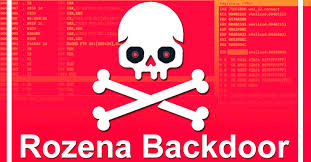What is Backdoor Malware Attack?

Backdoor attacks can take various forms and serve different purposes, including:
Unauthorized Access: The attacker gains a secret entry point into a system, allowing them to perform actions as if they were an authenticated user or administrator.
Persistence: Backdoors are often designed to provide long-term access, allowing the attacker to maintain control over the compromised system for an extended period without being detected.
Data Theft: Attackers may use backdoors to steal sensitive data from the compromised system, such as personal information, financial records, or intellectual property.
Malicious Activities: Backdoors can be employed to carry out additional malicious activities, such as launching further attacks, spreading malware, or participating in a botnet.
System Manipulation: In some cases, backdoors are used to manipulate or modify system settings, configurations, or files, leading to disruptions or unauthorized changes.
- Backdoor attacks can be initiated through various means, including exploiting software vulnerabilities, utilizing weak or compromised passwords, or leveraging social engineering techniques to trick users into installing malicious software.
To prevent backdoor attacks, it is crucial to implement robust security measures, including:
Regular Software Updates: Keep all software, including operating systems, applications, and plugins, up to date to patch known vulnerabilities.
Strong Authentication: Use complex passwords, implement multi-factor authentication (MFA), and follow best practices for user authentication.
Security Audits: Conduct regular security audits and vulnerability assessments to identify and address potential weaknesses in systems and networks.
Firewalls and Intrusion Detection Systems (IDS): Implement firewalls to monitor and control incoming and outgoing network traffic, and use IDS to detect and respond to suspicious activities.
Employee Training: Educate users about security best practices, social engineering tactics, and the importance of avoiding suspicious links or downloads.
Monitoring and Logging: Regularly review system logs for unusual or suspicious activities that may indicate a potential backdoor attack.
In the event of a suspected backdoor, it is essential to investigate promptly, close the unauthorized access point, and take steps to enhance security to prevent future attacks.
Related Posts

What is WordPress Shell & Defacement

